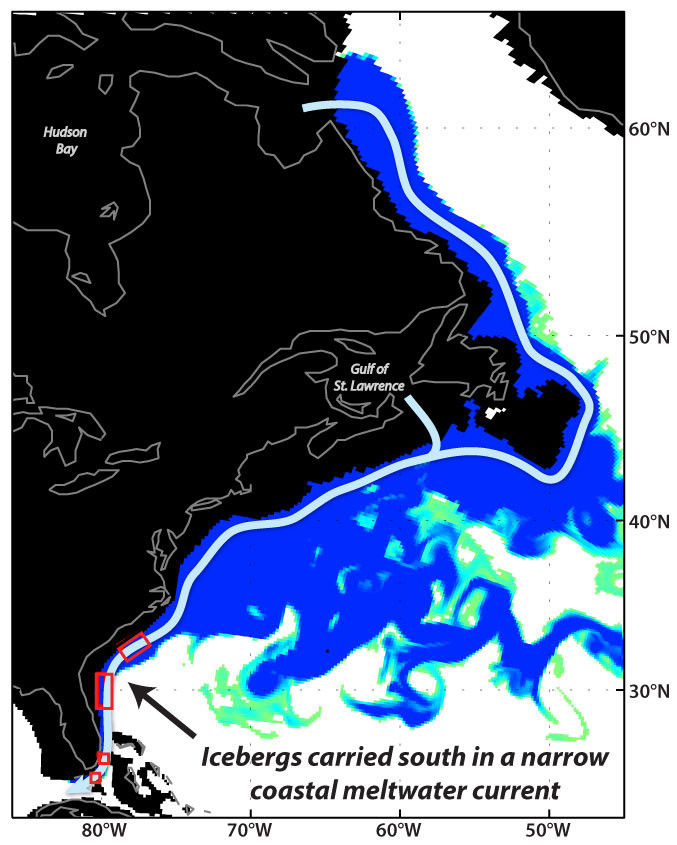Icebergs Drifted Around Miami 21,000 Years Ago Thanks to Laurentide Ice Sheet

Miami had icebergs drifting around it 21,000 years ago, with waters off the coast of Florida just a few degrees above freezing, researchers have discovered.
During the last ice age, the Laurentide ice sheet covered North America. When it began to melt, icebergs calved into the sea around Hudson Bay and began drifting south along the US east coast, scientists at the University of Massachusetts Amherst said.
Published in the online issue of Nature Geoscience, researchers looked at ocean circulation during the last ice age. They found icebergs and meltwater would have regularly reached South Carolina, sometimes getting as far as southern Florida and the Bahamas – drifting over 3,100 miles from Hudson Bay.
Their research, based on numerical models, is supported by iceberg scour marks found on the sea floor along the continental shelf. Images of the sea floor from Cape Hatteras to Florida show around 400 scour marks formed by huge icebergs as they moved into shallow water.
The scientists simulated a series of glacial meltwater floods in ocean circulation models for two locations – Hudson Bay and the Gulf of St Lawrence.

Oceanographer Alan Condron said: "In order for icebergs to drift to Florida, our glacial ocean circulation model tells us that enormous volumes of meltwater, similar to a catastrophic glacial lake outburst flood, must have been discharging into the ocean from the Laurentide ice sheet, from either Hudson Bay or the Gulf of St Lawrence."
Researchers said the surface ocean current off the Florida coast would have undergone a 180 degree flip in direction, with warm streams being replaced by freezing water – an event that would have led to the sudden appearance of massive icebergs.
"The depth of the scours tells us that icebergs drifting to southern Florida were at least 1,000ft, or 300m thick," Condron said. "This is enormous. Such icebergs are only found off the coast of Greenland today."
The findings, authors say, suggest the mechanisms of abrupt climate change are more complicated than previously thought: "Determining how far south of the subpolar gyre icebergs and meltwater penetrated is vital for understanding the sensitivity of North Atlantic Deep Water formation and climate to past changes in high-latitude freshwater runoff," the study said.
Condron added: "This new research shows that much of the meltwater from the Greenland ice sheet may be redistributed by narrow coastal currents and circulate through subtropical regions prior to reaching the subpolar ocean. It's a more complicated picture than we believed before."
© Copyright IBTimes 2025. All rights reserved.






















